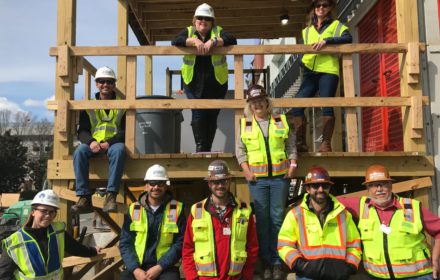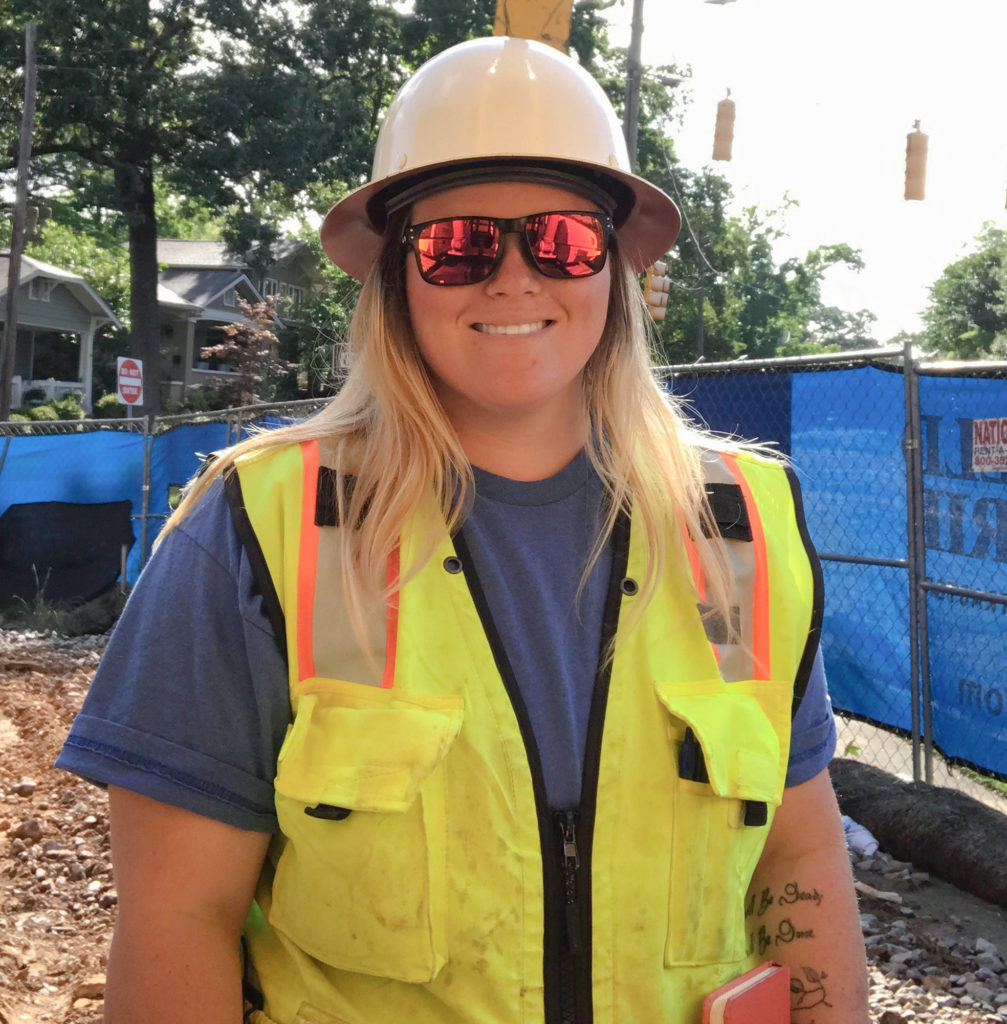Women in Construction: Signs of Progress Amid Continuing Efforts
March 3, 2020
Missy Warren is in rare company when she steps onto the jobsite at WakeMed Cary Hospital in North Carolina—but not in the way you might think. Warren is project director at the site, where Brasfield & Gorrie is working on its second vertical expansion for the hospital. She previously served as project manager on the hospital’s initial vertical expansion. (Pictured above: Cara Permar of WakeMed Health and Hospitals, Kristen Puryear of Dewberry, Pam Houston of BSA LifeStructures, and Missy Warren of Brasfield & Gorrie.)
When Warren looks around the current project, she sees women who, like her, work in construction leadership roles. Leaders from the project’s architect, owner and engineer sides are also female.

The number of women in construction is on the rise, according to the Bureau of Labor Statistics, with increases each year since 2013. But project teams like WakeMed Cary’s remain the exception in this male-dominated field. As of December 2018, women account for only 9.9 percent of the construction industry in the United States.
Brasfield & Gorrie aims to change that. Diversity and inclusion isn’t just a catchphrase; it’s key to our purpose of building exceptional people, trusting relationships, great projects, and strong communities. Our projects, employees, and communities are strengthened by an inclusive culture and enhanced by the experiences and perspectives of a diverse workforce.
We participate in and lead a variety of workforce development programs, both internal and external, throughout our 12-office footprint. Outreach programs help attract diverse new talent to the industry, and internal education efforts such as our Field Training Center develop employees for long-term career growth.

Carly Stanford has experienced that firsthand. Now a field engineer, Stanford didn’t envision a career in construction. In fact, she stumbled into the industry by accident after a scheduling error landed her in a carpentry class taught by a former Brasfield & Gorrie employee at St. Clair County Schools’ Career Tech Center in Alabama. There she met Field Training Manager Howard Davis, who serves on the center’s advisory board. She discovered a knack for the trade, becoming the state champion for the Skills USA Carpentry competition with support and cheers from Brasfield & Gorrie.
Following graduation, she joined the company as a laborer. Now in her second year with Brasfield & Gorrie, Carly is working as a field engineer after completing the company’s Basic Field Engineering class. She cites the many opportunities the company has given her to learn and grow as one of the reasons she’s happy with her job.
We complement high-school training programs like the one Stanford enrolled in with participation in the ACE Mentor Program of America. The national program connects high school students with mentors in the design and construction industries, and in 2017 two of our employees were recognized as ACE Outstanding Mentors.
These efforts aren’t about meeting a quota or checking a box, and diversity itself isn’t enough. We believe inclusion is vital and demonstrate that belief by developing and supporting women as they grow in their careers. Women in typically male-dominated operational roles find support and camaraderie in the Women’s Operational Resource Group.
Our diversity and inclusion efforts extend beyond our own staff. In 2019, we launched EQUIP, an initiative dedicated to the business development and inclusion of minority- and women-owned subcontractors. Our EQUIP workshops offer minority business enterprise firms a forum to engage in industry best practices.
Opportunities are abundant for women in construction, and Brasfield & Gorrie is dedicated to helping women like Warren and Stanford thrive.